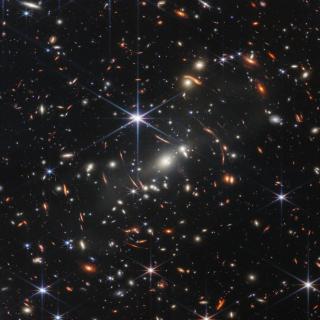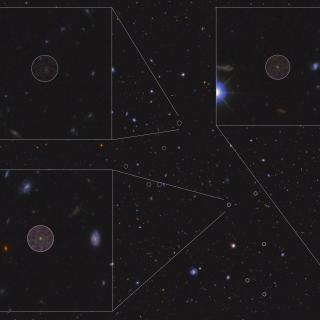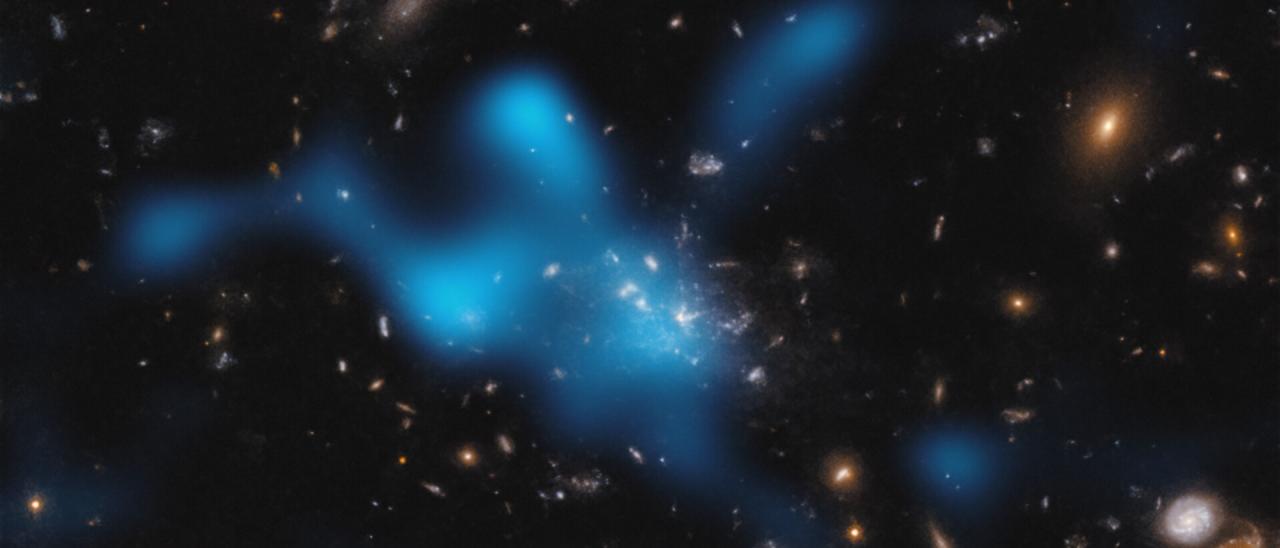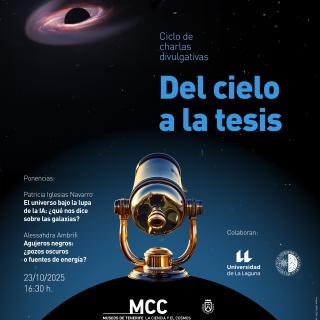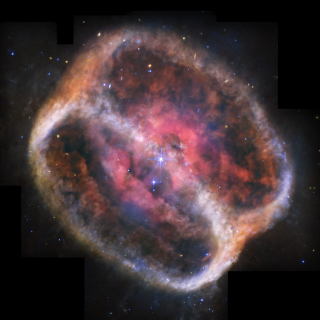An international scientific team, in which the Instituto de Astrofísica de Canarias (IAC) participates, has discovered a large reservoir of hot gas in the still-forming galaxy cluster around the Spiderweb galaxy. The finding reveals that this protocluster, far from dispersing, will end up gravitationally bound for the rest of its existence. Located at an epoch when the Universe was only 3 billion years old, this is the first time such a hot gas has been detected at such distances. The study, published in Nature, confirms that galaxy clusters, one of the largest known structures in the Universe, begin to form at very early times.
Galaxy clusters, as the name suggests, host a large number of galaxies — sometimes even thousands. They also contain a vast “intracluster medium” (ICM) of gas that permeates the space between the galaxies in the cluster. This gas in fact considerably outweighs the galaxies themselves. Galaxy clusters are so massive that they can bring together gas that heats up as it falls towards the cluster.
Previously, the ICM had only been studied in fully-formed nearby galaxy clusters. Detecting the ICM in distant protoclusters — that is, still-forming galaxy clusters – would allow astronomers to catch these clusters in the early stages of formation. “Cosmological simulations have predicted the presence of hot gas in protoclusters for over a decade, but observational confirmations has been missing,” explains Luca Di Mascolo, researcher at the University of Trieste, Italy, and first author of the study.
To achieve this observational confirmation, the science team carefully selected one of the most promising candidates, the Spider's Web protocluster, located at an epoch when the Universe was only 3 billion years old. In studying it, the researchers detected a large reservoir of hot gas at a temperature of a few tens of millions of degrees Celsius, indicating that the system is on its way to becoming a proper, long-lasting galaxy cluster rather than dispersing.
A growing structure
The team detected the ICM of the Spiderweb protocluster through what’s known as the thermal Sunyaev-Zeldovich (SZ) effect. This effect happens when light from the cosmic microwave background — the relic radiation from the Big Bang — passes through the ICM. When this light interacts with the fast-moving electrons in the hot gas it gains a bit of energy and its colour, or wavelength, changes slightly. “At the right wavelengths, the SZ effect thus appears as a shadowing effect of a galaxy cluster on the cosmic microwave background,” explains Helmut Dannerbauer, researcher at IAC and co-author of the study.
By measuring these shadows on the cosmic microwave background, astronomers can therefore infer the existence of the hot gas, estimate its mass and map its shape. These results were made possible by the Atacama Large Millimeter/submillimeter Array (ALMA) located in the Atacama Desert in Chile. “Thanks to its unparalleled resolution and sensitivity, ALMA is the only facility currently capable of performing such a measurement for the distant progenitors of massive clusters,” says Di Mascolo.
Previously, cold gas had been detected in this protocluster, but the mass of the hot gas found in this new study outweighs it by thousands of times. "This finding shows that the Spiderweb protocluster is indeed expected to turn into a massive galaxy cluster in around 10 billion years, growing its mass by at least a factor of ten" explains Elena Rasia, researcher at the Italian National Institute for Astrophysics (INAF) in Trieste, Italy, and co-author of the study.
For the scientific team this system exhibits enormous contrasts, as the hot thermal component will destroy much of the cold component as the system evolves. "We are witnessing a delicate transition", adds Tony Mroczkowski, a researcher at the European Southern Observatory (ESO) and co-author of the paper. "The study provides observational confirmation of long-standing theoretical predictions about the formation of the largest gravitationally bound objects in the Universe.”
In the coming months it is planned to observe this structure with the James Webb Space Telescope (JWST) through a programme led by the IAC. "Thanks to this programme of first-cycle observations with the JWST, we have also obtained a postdoctoral fellowship of excellence (Marie Sklodowska-Curie) awarded by the European Union," says Dannerbauer, who will lead this scientific programme. "This is a unique opportunity that proves the scientific value of this object and how important it is for astrophysical research to understand the formation and evolution of these 'cities of galaxies'," he concludes.
Article: Luca Di Mascolo et al. “Forming intracluster gas in a galaxy protocluster at a redshift of 2.16”, Nature, DOI: 10.1038/s41586-023-05761-x
Contact at the IAC:
Helmut Dannerbauer, helmut [at] iac.es (helmut[at]iac[dot]es)

